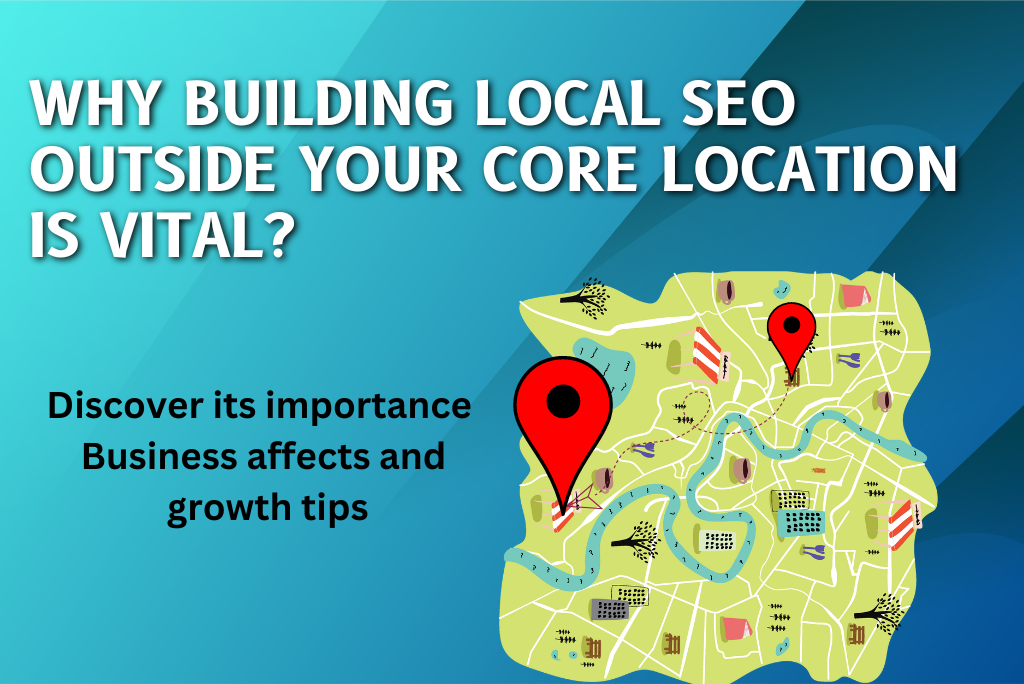
In today’s competitive digital landscape, expanding your business reach beyond your primary location is essential for sustained growth. Building Local SEO Outside Your Core Location offers a powerful strategy to tap into new markets and attract customers from neighboring areas. By optimizing your online presence for specific locations, you can ensure your business appears prominently in relevant local search results, driving traffic and increasing visibility. This article explores effective tactics to enhance your local SEO outside your main location, enabling you to broaden your market reach and achieve greater success.
Table of Contents
What is Local SEO?
Local SEO is a strategic approach to optimize your online presence for attracting customers from local searches, making it indispensable for businesses that operate within specific geographic areas, such as dentists, restaurants, and service-based companies. Building Local SEO Outside Your Core Location enables you to reach nearby or strategically targeted areas, effectively broadening your audience and increasing visibility. This approach is particularly advantageous for brick-and-mortar businesses seeking to attract a wider range of local customers, driving more foot traffic and boosting sales. By optimizing for multiple locations, you enhance your business’s ability to connect with a broader local customer base and maximize your market reach.
Building Local SEO Outside Your Core Location
Expanding your local SEO efforts beyond your primary location offers several strategic advantages:
- Enhanced Brand Visibility: Targeting multiple locations can significantly increase your business’s visibility in local search results across various regions, boosting brand awareness.
- Access to New Markets: By optimizing for areas outside your core location, you can tap into new customer segments in neighboring towns, cities, or even regions.
- Competitive Edge: Many small businesses limit their local SEO focus to their primary location. Expanding your efforts can provide a distinct advantage over competitors who have not yet ventured into these additional markets.
Ways to Develop Local Search Engine Presence Outside of Your Main Office
1-Create Location Specific Pages
One of the most powerful ways to boost your local SEO is to create dedicated landing pages for each specific location you serve. These pages should be optimized with relevant keywords and content tailored to that area.
The following advice will help you get started:
- Weave in location-based keywords naturally: Use keywords related to your location throughout the content, but don’t stuff them in. Keep it organic and informative.
- Highlight local landmarks, events, and community news: Make your landing pages more relevant by referencing local points of interest, upcoming events, and community news. This helps connect your business with the local community.
- Ensure each page has unique content: Avoid duplicate content issues by ensuring that each landing page has its own distinct content. This makes it easier for search engines to determine the unique topic of every page.
2-Take Control of and Improve Your Listings on Google My Business
Want to attract customers from multiple locations? Google My Business (GMB) is an invaluable tool for you! By creating separate listings for each target area, you can significantly boost your local search visibility and reach a wider audience.
Tips for Success:
- Precise NAP: Verify that the name, address, and phone number (NAP) of your company are accurate and consistent for every listing.
- Visual Appeal: Add high-quality photos to showcase your business and products or services.
- Clear Information: Provide detailed business hours and a comprehensive description of what you offer.
- Customer Reviews: Encourage satisfied customers to leave reviews for each location, building trust and credibility.
3-Build Local Citations and Backlinks
Citations and backlinks are like votes of confidence for your business, helping you rank higher in local search results. Here’s how to build them:
- Submit Your Business Everywhere: List your business on local directories and online listings.
- Partner Up: Collaborate with local businesses, blogs, or media outlets for quality backlinks.
- Stay Consistent: Make sure your business information is the same across all platforms.
4-Leverage Social Media for Local Engagement
Social media is a great way to do it! Think about it: these platforms are like digital neighborhoods where people hang out. So, let’s make some noise in your target areas:
- Get specific with your posts and ads. Talk about stuff that matters to folks in your local community.
- Join the neighborhood watch. Get involved in local groups and communities to build your brand’s reputation.
- Use hashtags that everyone’s talking about. Using local hashtags can assist you in expanding your target area’s readership.
5-Create Local Content
Generating content that appeals to your target audience is essential in the realm of local SEO. By crafting content that speaks directly to the local community, you can drive engagement and boost your search rankings.
Here are some tips to help you create effective local content:
- Write about local topics: Focus on local events, news, or issues that are relevant to your target audience.
- Incorporate local keywords: Naturally, integrate local keywords throughout your content to improve search engine relevance.
- Create video content: Share videos showcasing local events or your business’s involvement in the community.
6-Optimize for Mobile Search
Admittedly, the majority of people these days are addicted to their smartphones. So, if you want to capture their attention, your website needs to be mobile-friendly. It is a necessity rather than merely a nice-to-have.
The following advice can help you make your website mobile-friendly:
- Responsive Design: This means your website automatically adjusts to fit different screen sizes, whether it’s a tiny smartphone or a large tablet.
- Speed Matters: Nobody wants to wait for a website to load on their phone. Make sure it’s lightning-fast!
- Easy Navigation: Keep things simple and intuitive. Clearly labeled menus and readily available contact details are crucial.
- Click-to-Call Buttons: Make it super easy for people to call you directly from their phones.
7-Monitor and Adjust Your Strategy
Building a strong local SEO presence outside your primary location isn’t a one-time fix. It requires ongoing attention and adaptation to stay ahead of the competition and meet the changing needs of your target audience.
The following advice will help you stay focused:
- Track Performance: Use tools like Google Analytics and Search Console to monitor your progress and identify areas for improvement.
- Regularly Review and Update: Keep your location-specific pages and Google My Business listings fresh and accurate.
- Stay Informed: Stay up-to-date on local trends and news, and adjust your content accordingly.
Conclusion
Building Local SEO Outside Your Core Location can potentially open up new avenues for growth, it’s not without its risks. This strategic move requires a significant investment of time, resources, and effort. If not executed flawlessly, it could dilute your brand’s focus and hinder your ability to maintain a strong presence in your primary market.
However, for businesses with the right resources and a clear vision, expanding their local SEO footprint can be a game-changer. By carefully implementing the strategies discussed earlier, you can increase your visibility, attract new customers, and gain a competitive edge in multiple markets. But keep in mind that local SEO requires constant attention and is a continuous effort. If you’re willing to take the risk and invest the necessary resources, the potential rewards could be substantial.



